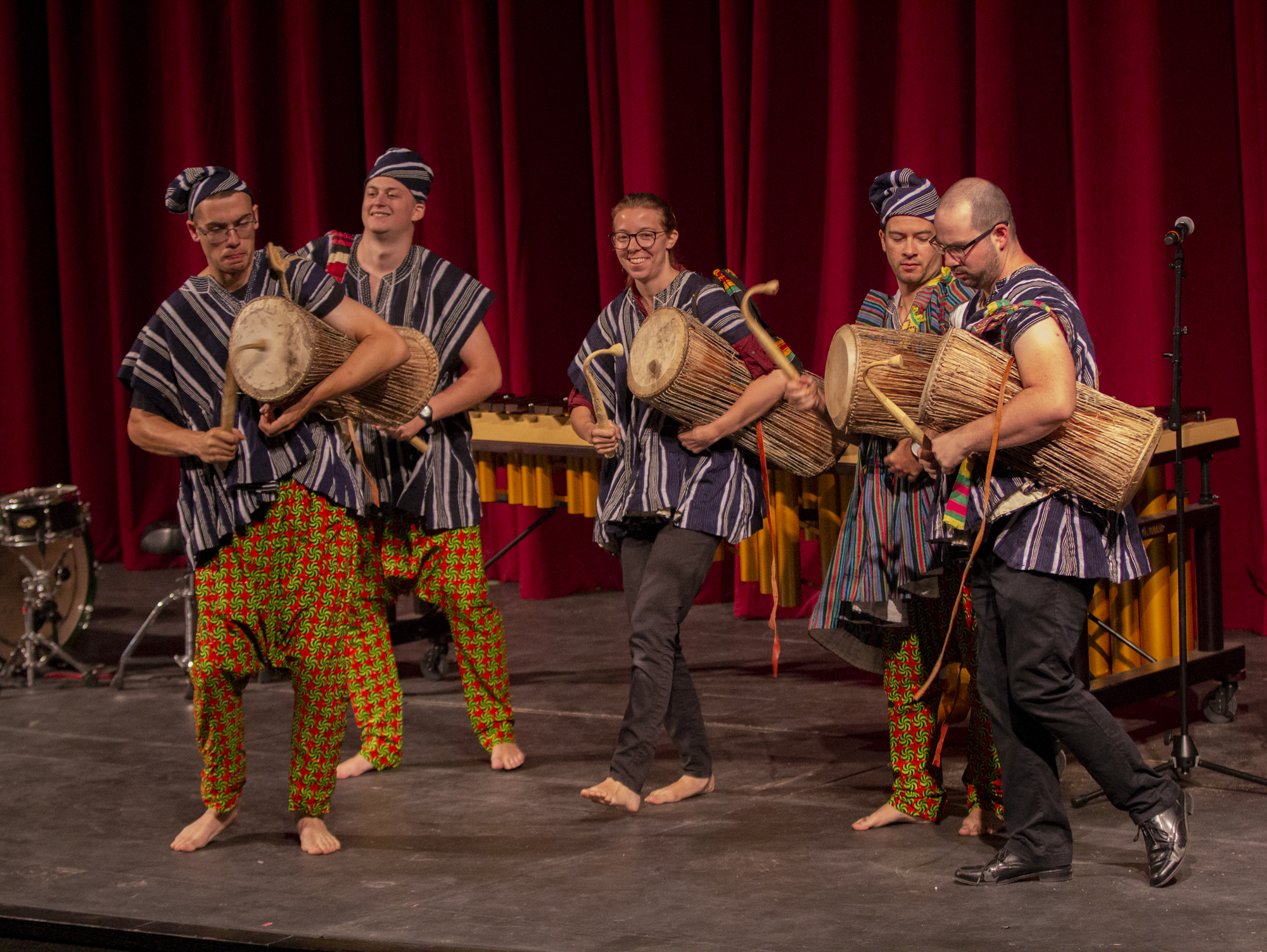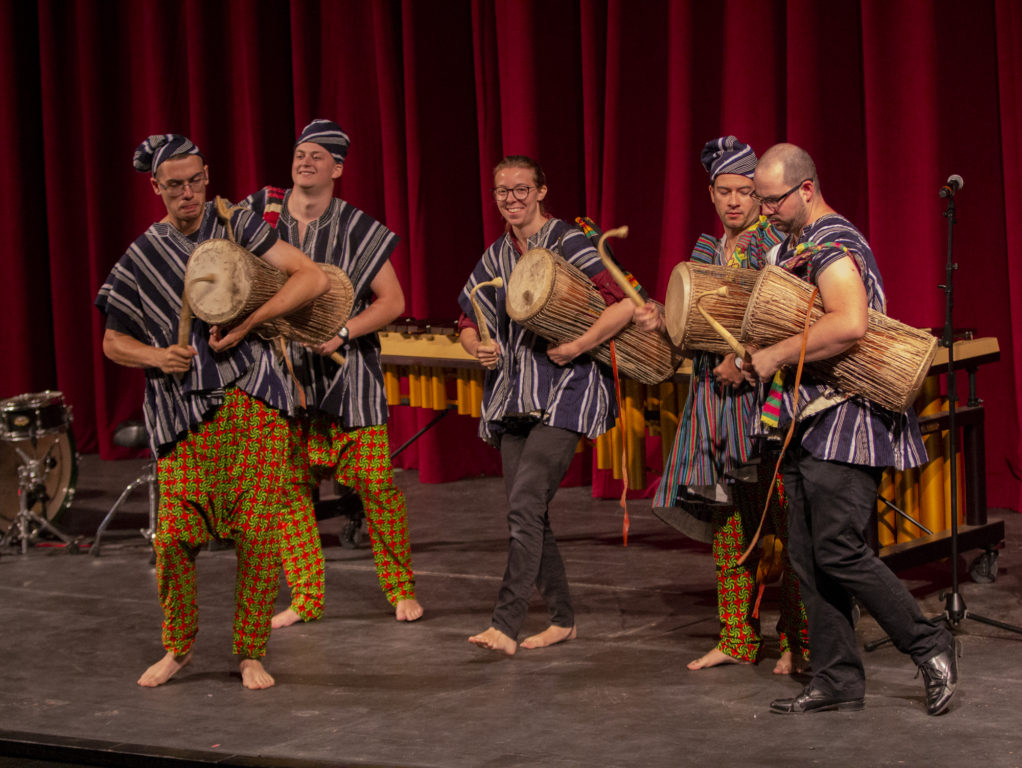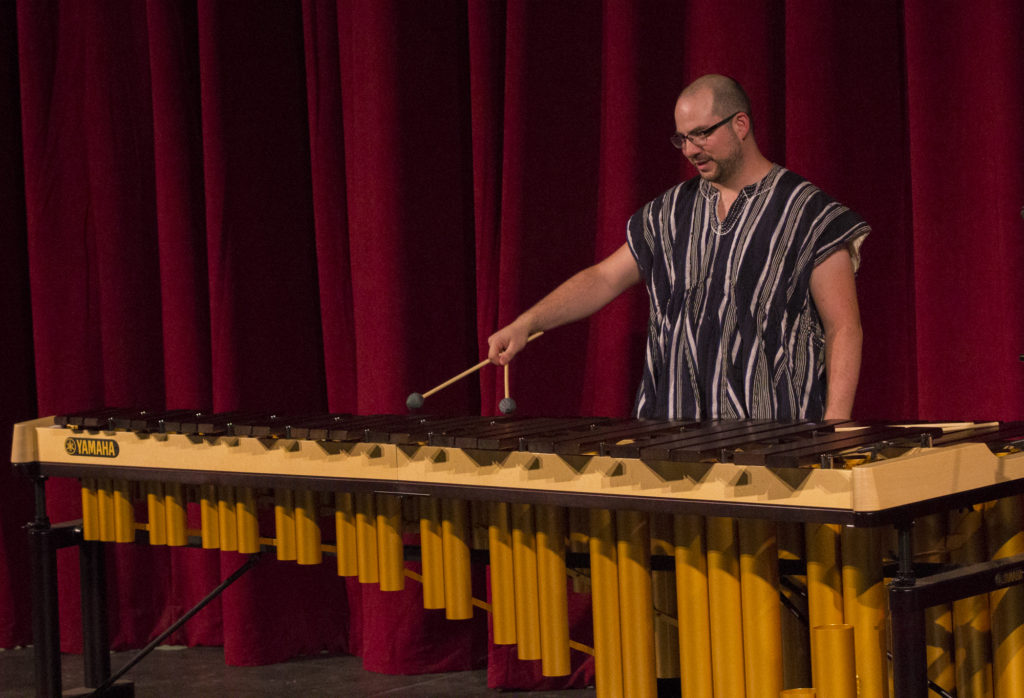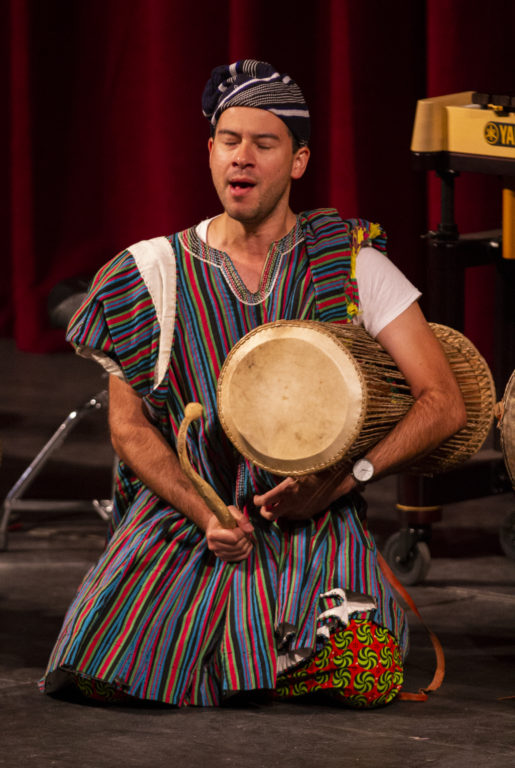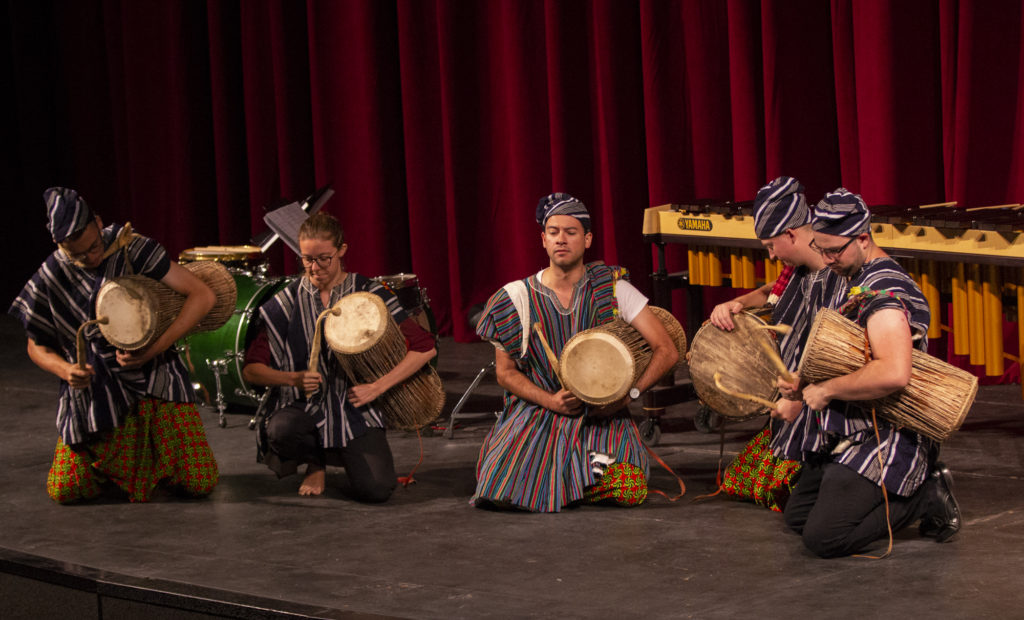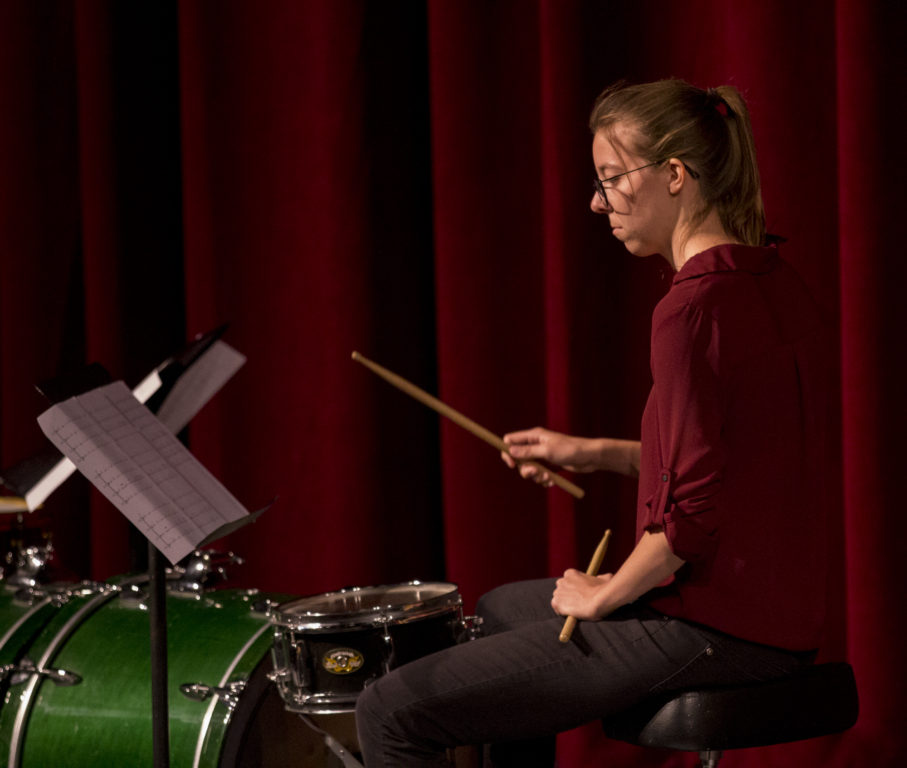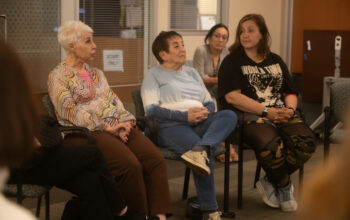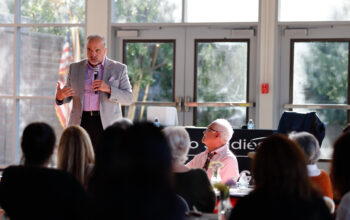The history of Dagomba resonated from the three Lungas, talking drums, and two Gungons, bass drums, on stage.
Kevin Good introduced the music of Dagomba, a group in northern Ghana, and the rhythmic diversity of percussion during his Afternoon Concert at the Performing Arts Building Mainstage Sept. 19.
The 40 minute long program began with an ensemble of traditional Dagomba praise drumming, featuring Good, Katie Eikam, Justin Bardales, Cole Castorina and Kevin Moran.
“Zhim Taai Kurugu” initiated backstage with great intensity. The group were wearing Dagomba smocks and continuously played onto the stage barefoot. Good had dress shoes on being that he was to perform different styles of percussion throughout the production.
After a brief pause, they got on their knees and performed “Nantoo Nimdi” in the center spotlight. Bardales chanted in Dagbani during this composition. His voice echoed above the booming drums as if both were communicating orally and musically.
They finished up the set with “Nyagboli,” while Good returned backstage.
Following the act was Good’s original piece, “Slow, Fragment, Vibraphone.” His source of inspiration derived from Sappho poems and the “Odyssey” by Homer. Good captured his desire to work with fragments and how they work as a whole in a larger structure via a metal vibraphone.
The notes from the bars of the vibraphone were soft, yet left a ringing sensation in the ears long after their duration. There was a shift from consonance to dissonance that blended in a relaxing manner despite their different pitches.
Seemingly doing a 180-degree turn, DesoDuo debuted an original by Bardales titled, “Poor Crusty.” Motivated by Indonesian sounds, Eikam and Good used the snare drum and bass drum to establish a beat. One drummer would go off beat, then return while the next drummer went off until both would reconnect in unison, only to begin the cycle again.
“I try to show both sides of percussion. Something like the Dagomba drumming or ‘Poor Crusty’ really shows the bombastic side of loud beats and rhythmic things we can do,” Good said during a transition. “Something like my piece shows a little more delicateness. I really love the range that each of these instruments have.”
Good received a Bachelor’s in Percussion Performance and Musical Composition at the Hartt School in Connecticut. As an undergraduate student, Good’s first composition professor was David Macbride who wrote “Triptych Mvt. 1.” Macbride was influenced by Indonesian bamboo wind chimes that were repurposed into instruments.
Macbride died a year ago. Good will return to Hartt School this October for Macbride’s memorial concert.
“I consider it to be my wheelhouse piece inbedded in me,” Good said. “This is the first time I’m playing it since his passing. It’s a very special performance that I wanted to share.”
The movement is one of a three part series. Good utilized a wooden Marimba, the largest instrument on stage, to carry the notes from his sheet music and into the ears of listeners.
To close the show, the ensemble of five returned to Dagomba praise drumming. They demonstrated their skills with a bit of improv heard in “Namog’ Yili Mali Kpion Kpam,” “Nagbigeau” and “Nanigoo.”
At last, they finished with “Damba.” Bardales, who was wearing a different smock than the others, demonstrated why his was contrasting. His smock was larger and more airy which opened wide while he danced and jumped during their final performance.
He would stomp to the rhythm of the drums and slowly crouch down with the ensemble crouching with him. He was the leader and would walk toward them but they would step away from him. He would in turn step away from them as they walked toward him.
Their chemistry was evident as they danced off stage yet continued to play backstage. Their drumming was muffled but still they went on as if for their appreciation of Dagomba and for the amusement of themselves.
The next Thursday Concert will be on Oct. 3 at the Performing Arts Building Mainstage and will feature Charlotte Betry, a piccolo and flute performer.

